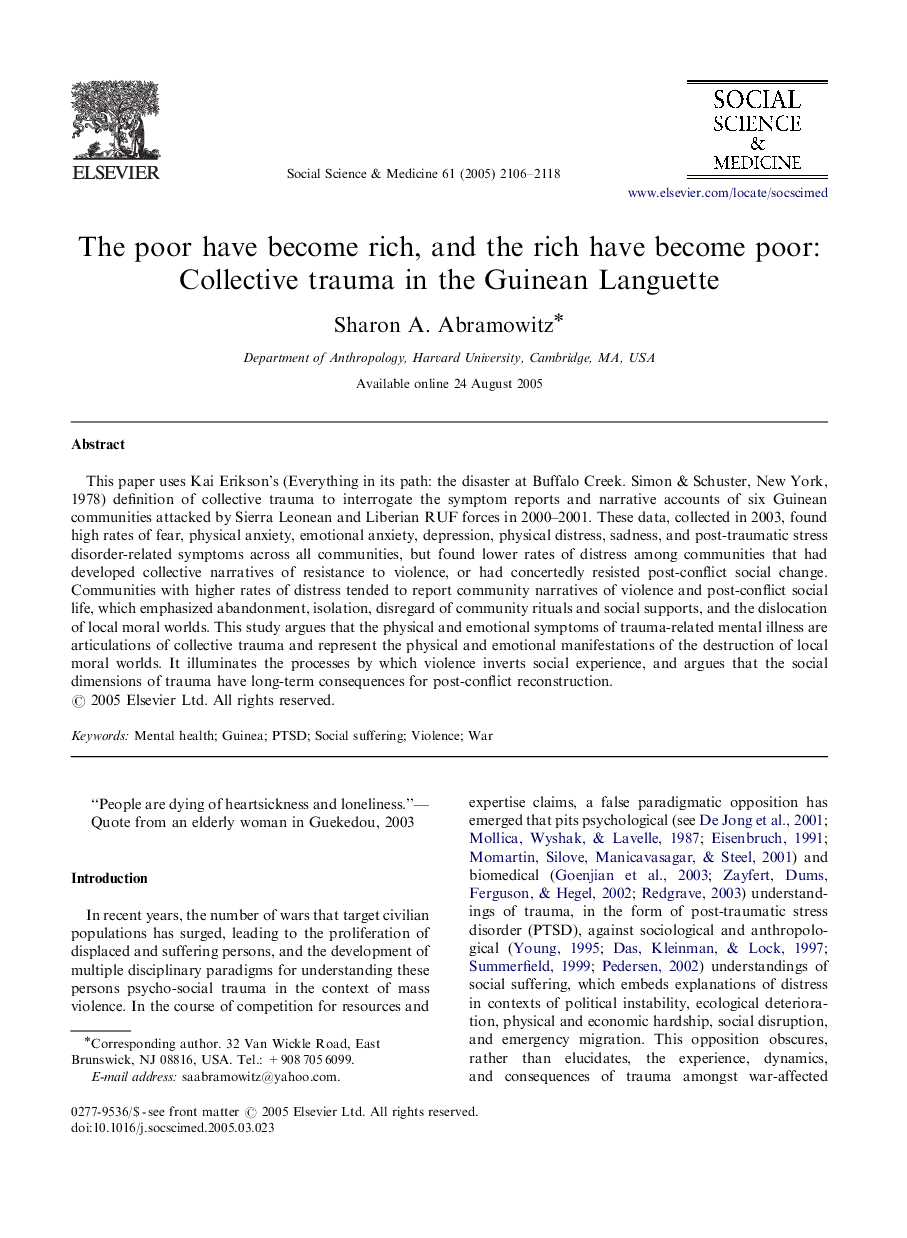| Article ID | Journal | Published Year | Pages | File Type |
|---|---|---|---|---|
| 955251 | Social Science & Medicine | 2005 | 13 Pages |
This paper uses Kai Erikson's (Everything in its path: the disaster at Buffalo Creek. Simon & Schuster, New York, 1978) definition of collective trauma to interrogate the symptom reports and narrative accounts of six Guinean communities attacked by Sierra Leonean and Liberian RUF forces in 2000–2001. These data, collected in 2003, found high rates of fear, physical anxiety, emotional anxiety, depression, physical distress, sadness, and post-traumatic stress disorder-related symptoms across all communities, but found lower rates of distress among communities that had developed collective narratives of resistance to violence, or had concertedly resisted post-conflict social change. Communities with higher rates of distress tended to report community narratives of violence and post-conflict social life, which emphasized abandonment, isolation, disregard of community rituals and social supports, and the dislocation of local moral worlds. This study argues that the physical and emotional symptoms of trauma-related mental illness are articulations of collective trauma and represent the physical and emotional manifestations of the destruction of local moral worlds. It illuminates the processes by which violence inverts social experience, and argues that the social dimensions of trauma have long-term consequences for post-conflict reconstruction.
